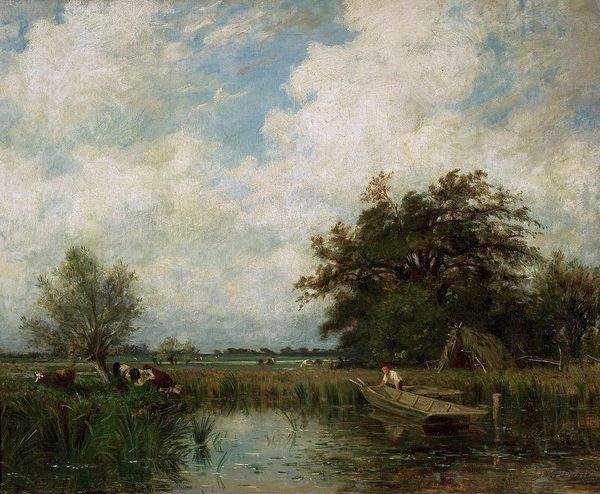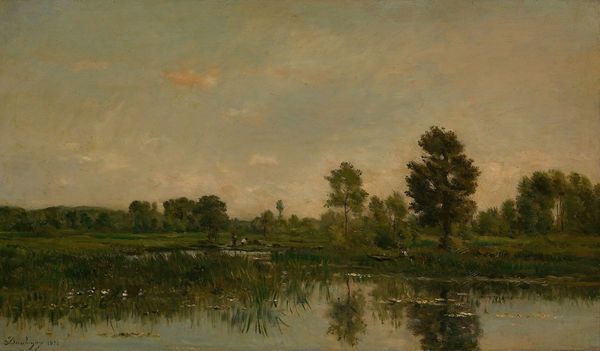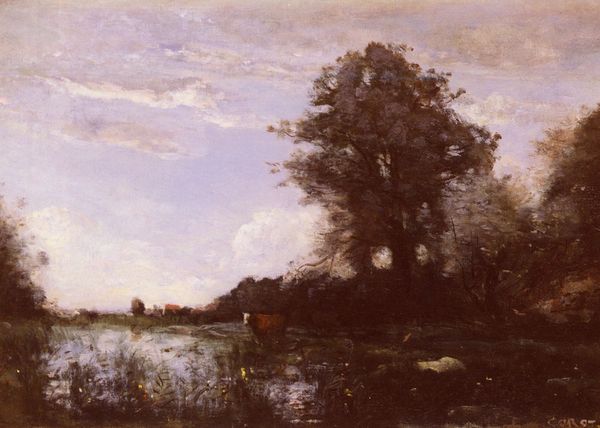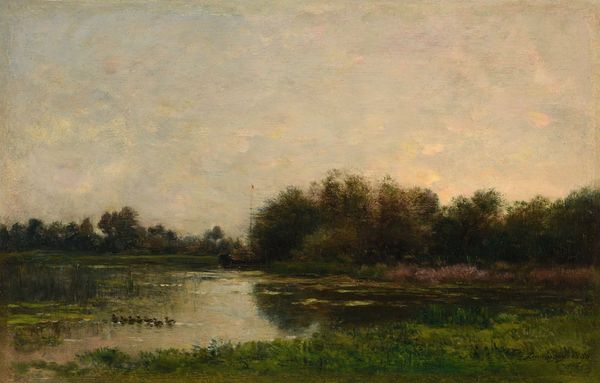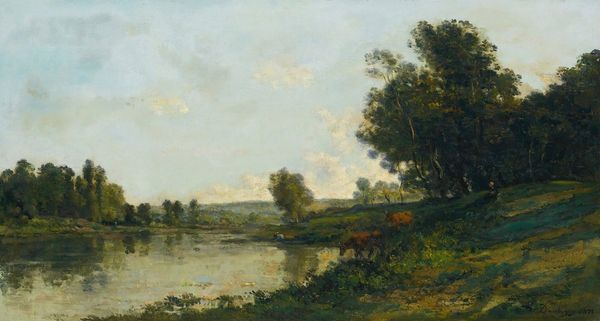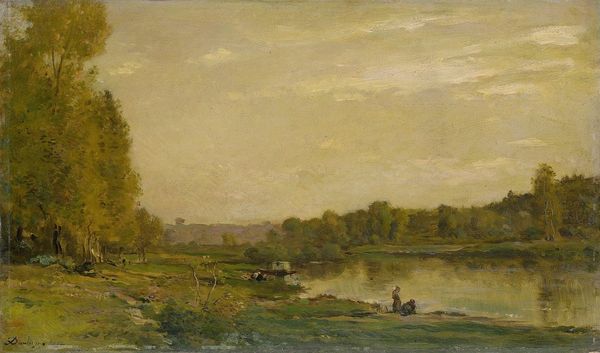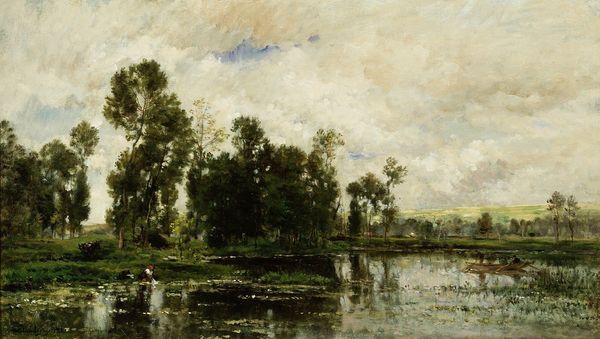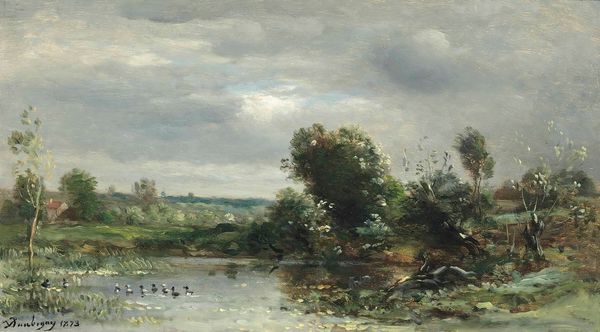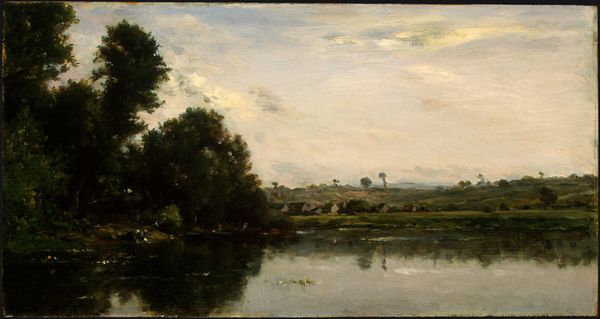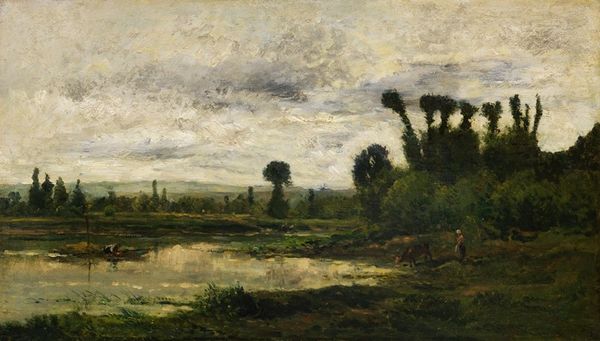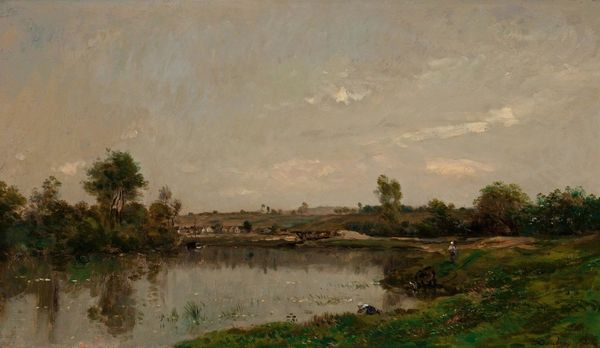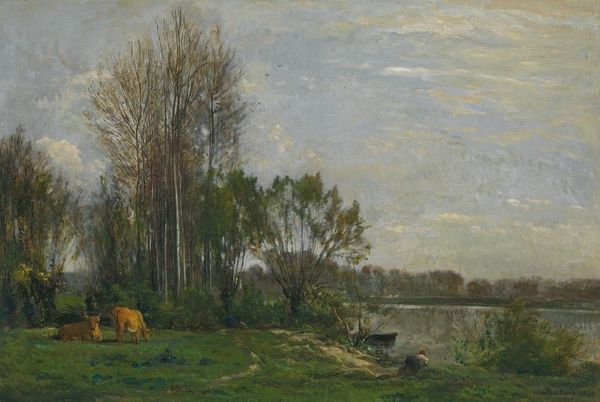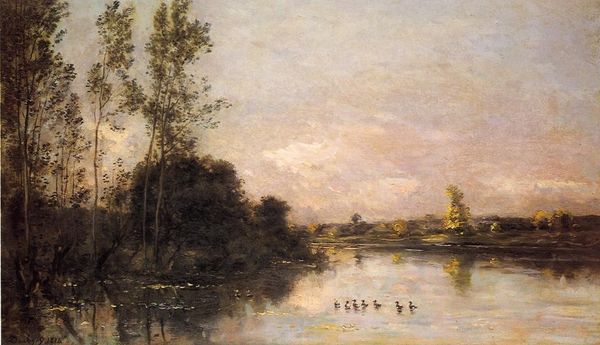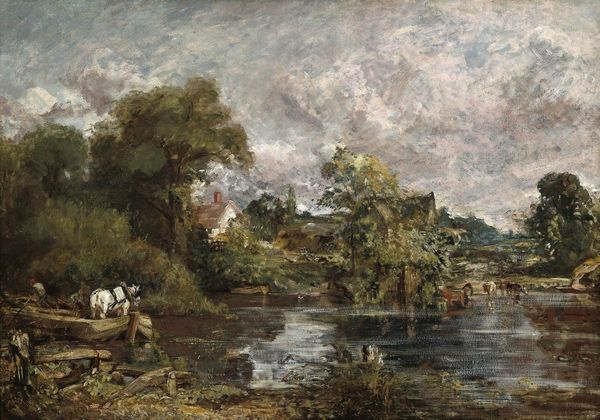
plein-air, oil-paint
#
portrait
#
impressionism
#
plein-air
#
oil-paint
#
landscape
#
genre-painting
Copyright: Public Domain: Artvee
Curator: Before us, we have Charles François Daubigny’s "Riverbank with Fowl," painted in 1868, using oil paint. The scene renders a tranquil riverscape imbued with soft light and idyllic charm. What are your immediate impressions? Editor: My eyes are drawn to the texture. Look at how he handled the oil paint, quite directly it seems. You can almost feel the grass and mud along the river's edge where these figures interact. I bet the 'plein-air' approach significantly influenced the artwork’s creation, imprinting immediacy and naturalism onto the canvas. Curator: Precisely! Notice how Daubigny’s brushstrokes, though loose, articulate the landscape’s form with acute precision. The composition guides our gaze from the figures along the bank into the placid expanse of the river. I believe we can also discuss its function as more than a landscape study: it presents, subtly, genre painting as well. Editor: Yes, the choice of earthy pigments speaks volumes, I think, too. The process likely involved readily accessible materials, highlighting the value in representing everyday scenes, working-class themes. And note that it invites analysis of art's value as a commodity intended for bourgeois consumption as a leisure display. The directness with materials, and accessibility of the subject, demystify "high" art practices by bringing attention to labor. Curator: I concur. But do not ignore that Daubigny transforms this unpretentious setting through his artistic vision into a sophisticated arrangement of form and color. See how the sky itself appears like another plane—almost floating in space. There’s a palpable sense of harmony at play. It is an interplay of serenity with a balanced, yet unassuming design. Editor: Perhaps it signifies the labor and effort in capturing that very serenity we feel from its output? Daubigny's use of landscape blurs, doesn't it, these lines between artistic representation and an immediate engagement with the raw elements shaping working-class realities and leisurely diversions alike. Curator: Indeed, each facet informs our understanding of the whole. The harmony itself suggests its creation from both labor and observation, both in theory and execution. Editor: I agree. Through materiality, through the choices in depiction, the painting achieves a kind of dialectic.
Comments
No comments
Be the first to comment and join the conversation on the ultimate creative platform.
